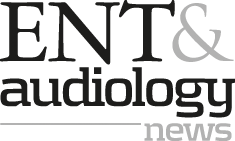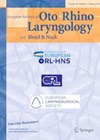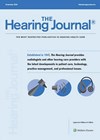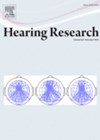
Journal Reviews archive for 2025
Endoscopic approach to the internal auditory canal (IAC)
The otoendoscope, with its wide-angle visualisation, has made it an increasingly popular tool to perform outer, middle and even inner ear surgery. Approaches to the IAC with the endoscope have been described by several authors. In this paper, Valente et...
Tubomanometry in eustachian tube dysfunction
This prospective study evaluated the validity and reliability of tubomanometry (TMM) in 25 patients with sinus disease, 75 patients with middle ear disease and 25 healthy volunteers. After thorough clinical examination, the participants were evaluated with TMM, nasal endoscope, otoendoscope,...
Hearing impairment awareness in primary school teachers
Early intervention of hearing loss is crucial in school-age children to avoid delay in development of communication, cognition, language and social skills. Teachers play a crucial role in identification and support in cases of progressive or late-onset hearing loss. Using...
Person-centric practice within a hearing wellbeing programme
This Australian team describe their development process of a hearing wellbeing programme beginning in August 2020, with a wide variety of stakeholders being involved. Primarily, they report, they aimed to overcome the challenge of providing engaging social and emotional support...
Case study suggesting mtDNA mutation as a tinnitus factor: ND1:m.3394T>C
Konadath et al report a genetic case study of a 24-year-old female experiencing reduced hearing sensitivity and tinnitus along with a blocked sensation in her right ear, sudden onset one year prior with no other otological complaints. Standard audiometry along...
Sound levels in our daily public places
Hearing conservation and noise safety are significant public health issues globally. Drinkwater’s article describes a wide variety of initiatives which contribute to healthier sound levels in public spaces and daily environments. One of particular interest is hearing assistive technology (HAT)...
Audiological decision-making in a complex bimodal case of adult congenital atresia
The authors describe a clinical case of a 65-year-old man with left congenital atresia who, as an adult, developed hearing loss in his right (better) ear and subsequently began seeking audiological intervention for hearing difficulties. Their client’s unique case history...
Supporting parents in improving their child’s hearing device use time
On the topic of supporting parents with improving their child’s hearing device time, The Hearing Journal recommends sharing a video from Hearing First (video provided online by Hear Jour; produced by www.hearingfirst.org) and provides a unique printable resource for parents...
Tinnitus without hearing loss – inflammation?
Inflammation can have a profound impact on multiple systems. Certainly in recent years, autoimmune conditions are on the rise and the impact on audiovestibular symptoms have been documented. Given the rates in the population, the impact of inflammation on the...
Maxillomandibular advancement and airway morphology
This is a cadaveric study comparing alterations in airway volume. Seven advancements of the maxillomandibular complex were undertaken, each with a 2 mm incremental advancement being scanned with a total of eight scans per cadaver. They showed that comparisons between...
COVID-19 and oral cancer
This is a Canadian retrospective paper covering the period of March 2018 to March 2022. It identified 190 patients; 91 pre-pandemic and 99 from the pandemic. From this, they found there was no increase in patient delay, professional delay or...
Demonstrating unobservable effects of therapy through PROMS: a review
Ultimately, healthcare should meet the needs of the people it is designed for. One way of measuring this is using patient-reported outcome measures (PROMS). These tools capture the patient’s perspective and have been described as demonstrating the unobservable effects of...











